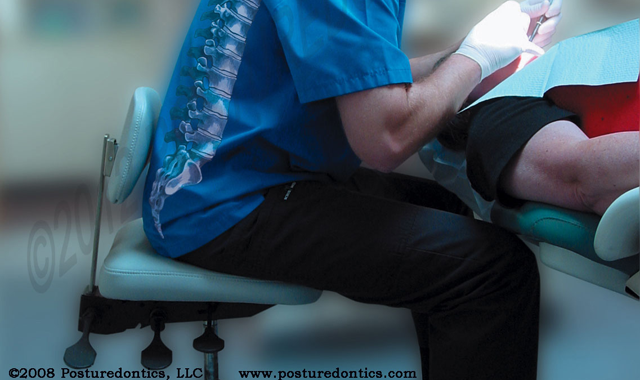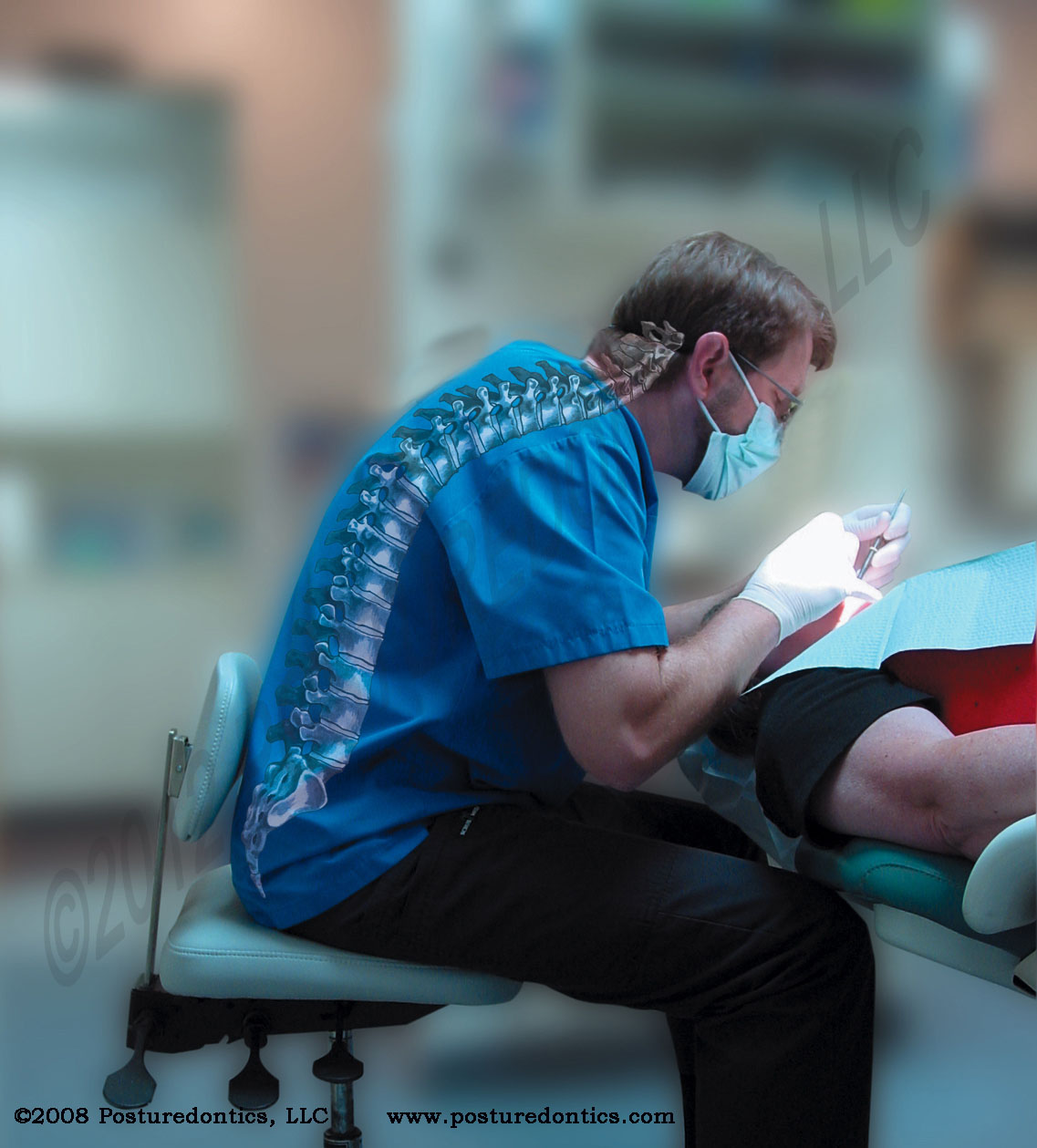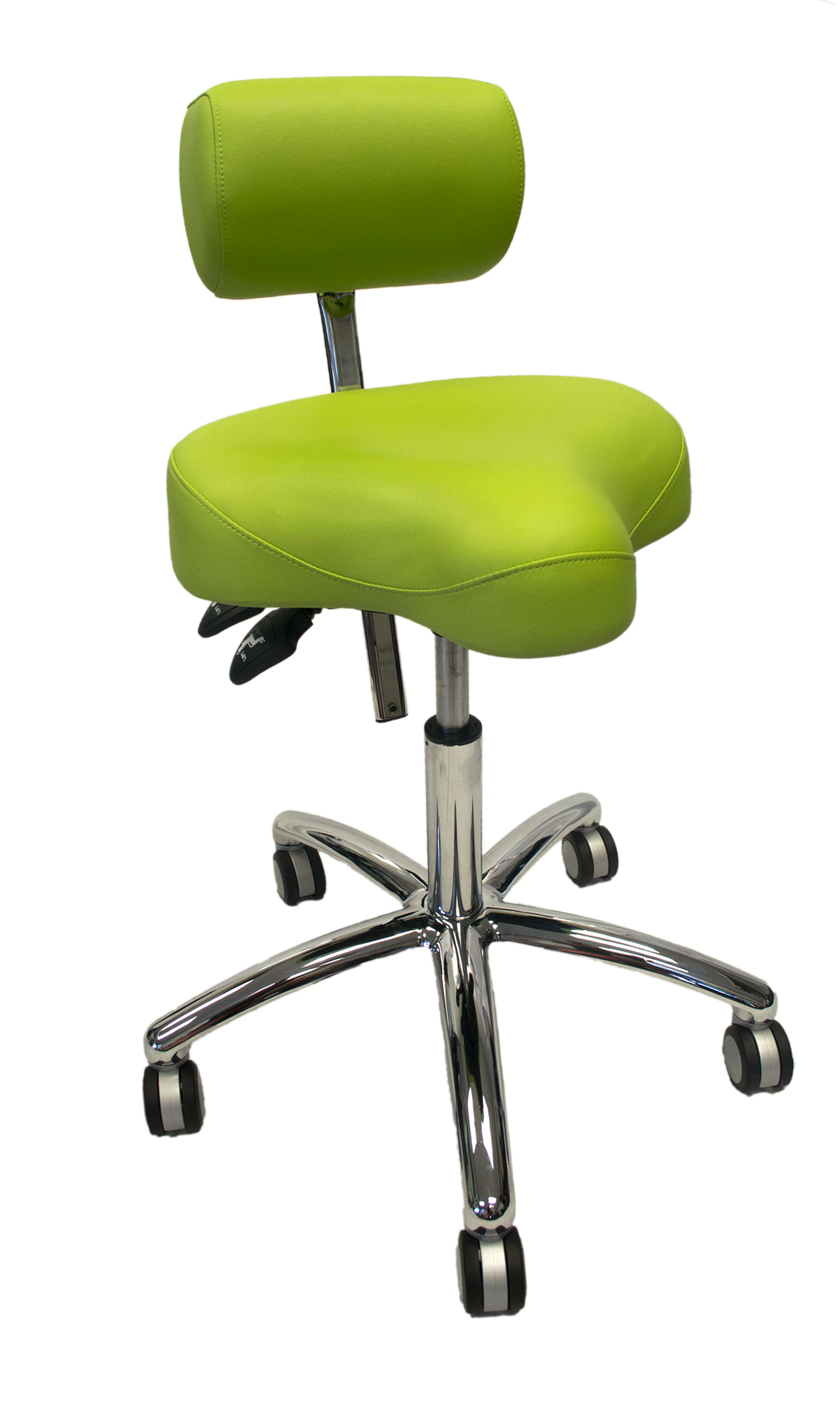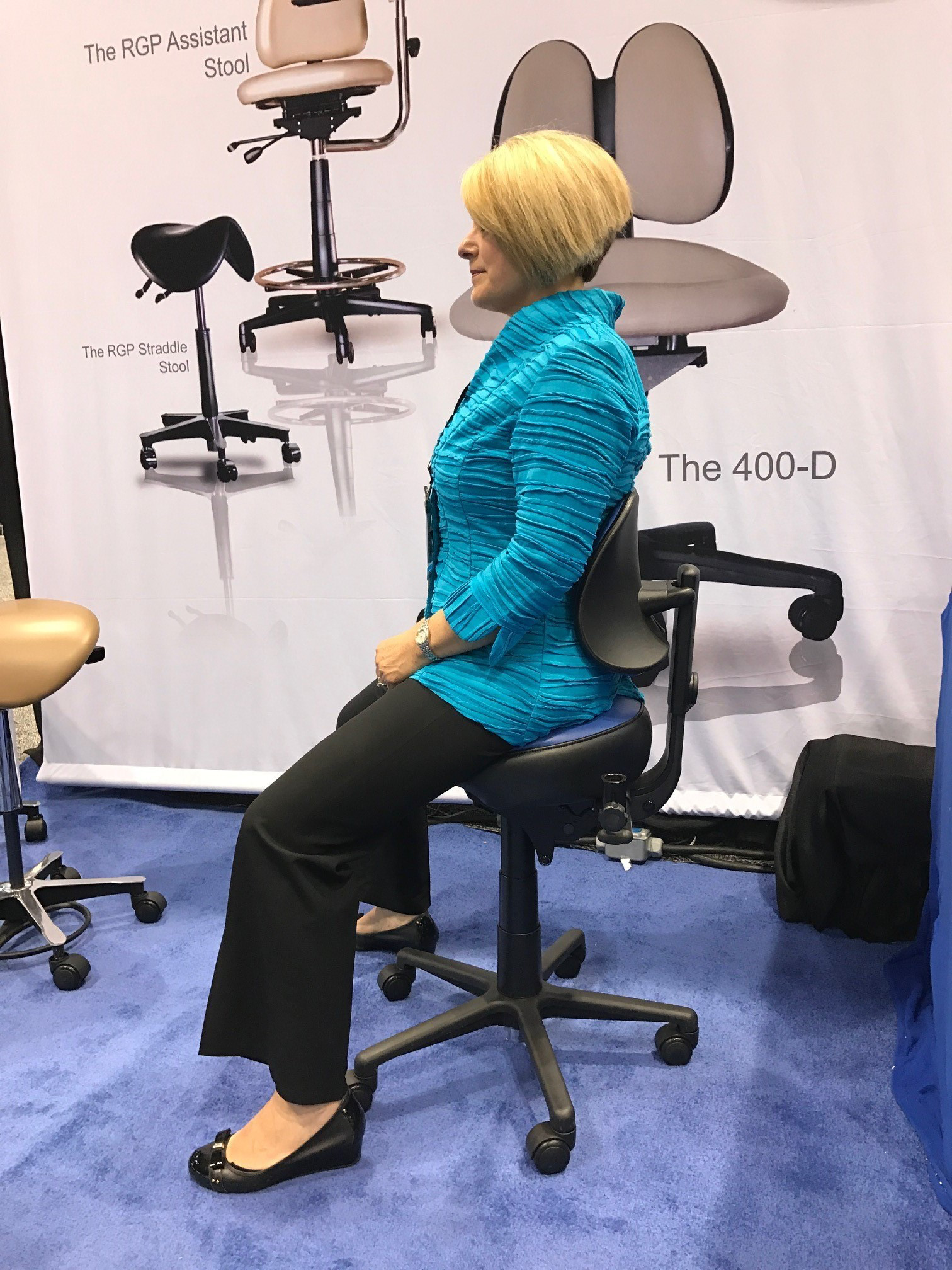Backrests and your health: What does the research say?
Backrests are an important consideration when selecting an operator stool.

When it comes to selecting an operator stool, the vast array of designs and features on the market today can make it a perplexing project. Numerous features must be considered and evaluated. However, one of the most poorly understood ergonomic features is the backrest and its impact on your health.
Studies suggest that a pain-free neutral posture involves a slight anterior pelvic tilt, which produces a small curvature of the lumbar spine (lumbar lordosis) and a relaxed thoracic spine. A primary function of the backrest is to help support this lumbar lordosis in sitting by maintaining contact with a convexity on the backrest called the lumbar support. This is an especially important feature with a non-tilting seat pan, which tends to cause rounding of the back.
Related reading: The ergonomic benefits of saddle-style stools
Fig. 1

On a flat seat, if the dentist does not maintain contact with the backrest -or there is no backrest at all-slouching typically occurs, and the iliolumbar ligaments and other dorsal soft structures are strained and weakened, predisposing them to injury. Slouching also disengages the posterior vertebral facets, which, in standing, play a primary role in supporting the spine (Fig. 1). When these are disengaged, the load is transferred to the spinal disc. The disc nucleus is then pushed backward and can eventually result in disc bulge or herniation. Slouching also causes dysfunctional arm movements and forward head posture, both of which may lead to neck/shoulder pain as well as heightened muscle activity in the upper and lower back with subsequent low back pain.
The position of the backrest is key to preventing low back pain. The backrest should adjust up and down so that it can be positioned to support the natural lordosis of your low back to reduce activity of the paraspinal muscles. It should also be adjusted forward to prevent flattening of the low back. It should be convex from top to bottom and need only be eight inches or so in height to provide adequate support (Fig. 2). Many older backrests on dental stools have no recognizable lumbar support at all. This is
Fig. 2

concerning, since the prominence of the lumbar support can reduce disc pressure. Sizes between 1 and 5 cm in thickness have been evaluated, with the largest benefits gained from the larger (3-5 cm) thickness.
More from the author: Are right angles... wrong?
Very large backrests should be carefully evaluated to assure adequate convexity of the lumbar support to properly support the low back and to ensure that the upper portion of a large backrest does not push the thoracic spine forward. Therefore, the benefits of the lumbar support are to reduce lumbar disc pressure, decrease low back and referred leg pain, reduce forward head posture and decrease muscle activity (rest the back muscles).
The shape of the backrest is an especially important consideration. A tall backrest that extends above the lower edge of the scapulae can minimize the benefits of the lumbar support by exerting pressure on the shoulder blades, and should, at its highest point, be 6 cm below the lower edge of the scapulae. Because the ribcage is a rigid structure, back support above the lower edge of the shoulder blade is unnecessary, and in dentistry can inhibit shoulder movement. Wide backrests should be avoided because these can inhibit spinal movement and lateral movement of the arms and shoulders, which is especially important in the prevention of low back pain syndromes.
Fig. 3

Some dentists wonder how saddle stools can be considered ergonomic when they have no backrest. Studies show that sitting with the thighs sloped steeply downward helps maintain the lumbar curve (Fig. 3). Hence, damaging low back muscle strain is lessened through use of a saddle stool; however, the abdominal activity is substantially increased. A recent study found that adding a backrest to a stool that allows the operator to sit with thighs sloping steeply downward not only lowers the low back muscular effort, but also slightly lowers the abdominal activity and maintains the most neutral posture.
More on ergonomics: The top exercises that can worsen dental professionals' health
Backrests are just one of multiple ergonomic considerations when selecting an operator stool. Careful assessment of key ergonomic features (cylinder height, armrests, seat material, casters, etc.) is necessary to determine if the stool will contribute to your health and career longevity
Oral Health Pavilion at HLTH 2024 Highlighted Links Between Dental and General Health
November 4th 2024At HLTH 2024, CareQuest, Colgate-Palmolive, Henry Schein, and PDS Health launched an Oral Health Pavilion to showcase how integrating oral and general health can improve patient outcomes and reduce costs.
Episode 31: Dentsply Sirona Implant Announcements
September 30th 2021DPR’s Editorial Director Noah Levine sat down with Gene Dorff, Dentsply Sirona’s group vice president of implants and Dr. Dan Butterman to review several big announcements the company made in the arena of implants during Dentsply Sirona World 2021 in Las Vegas.